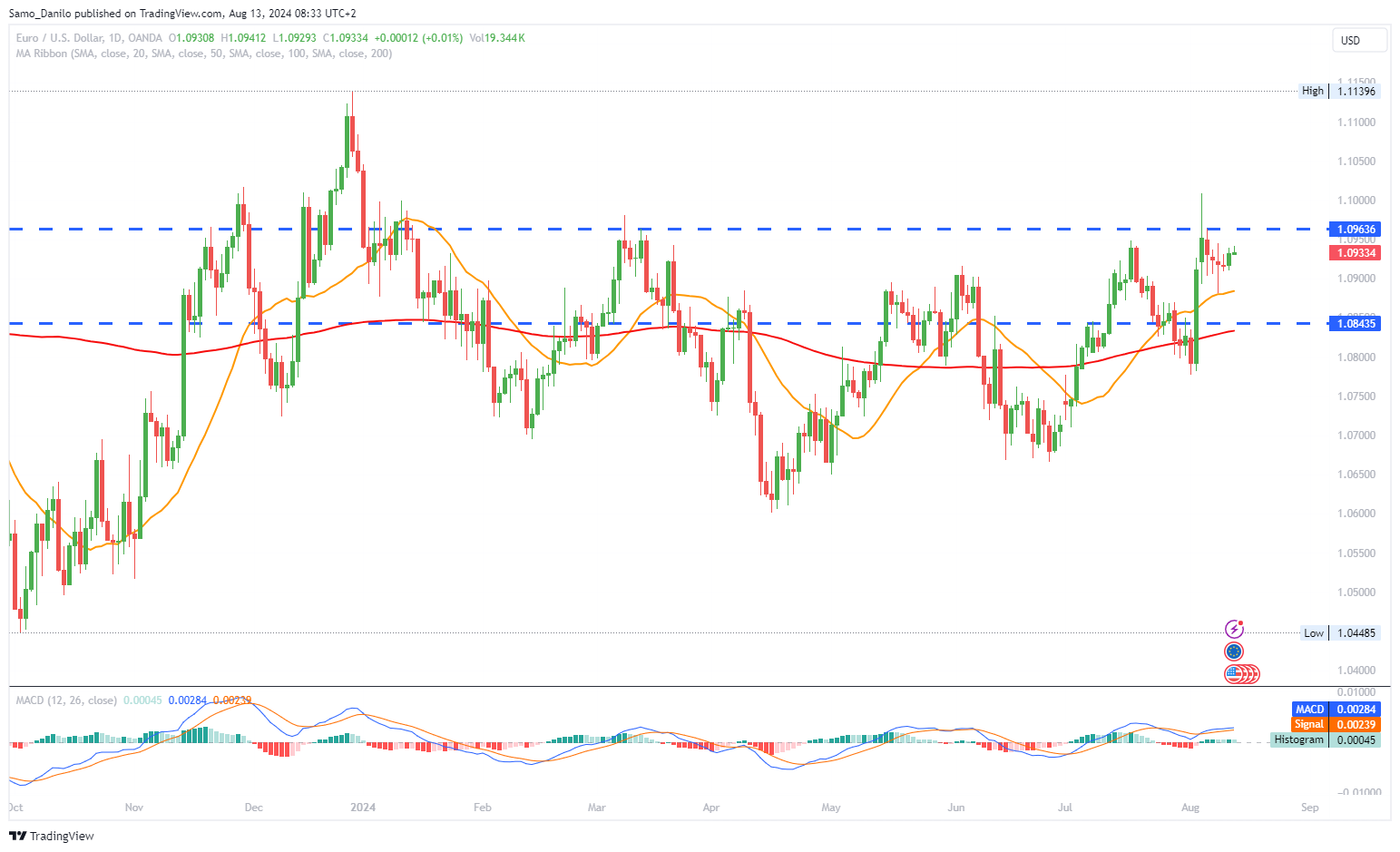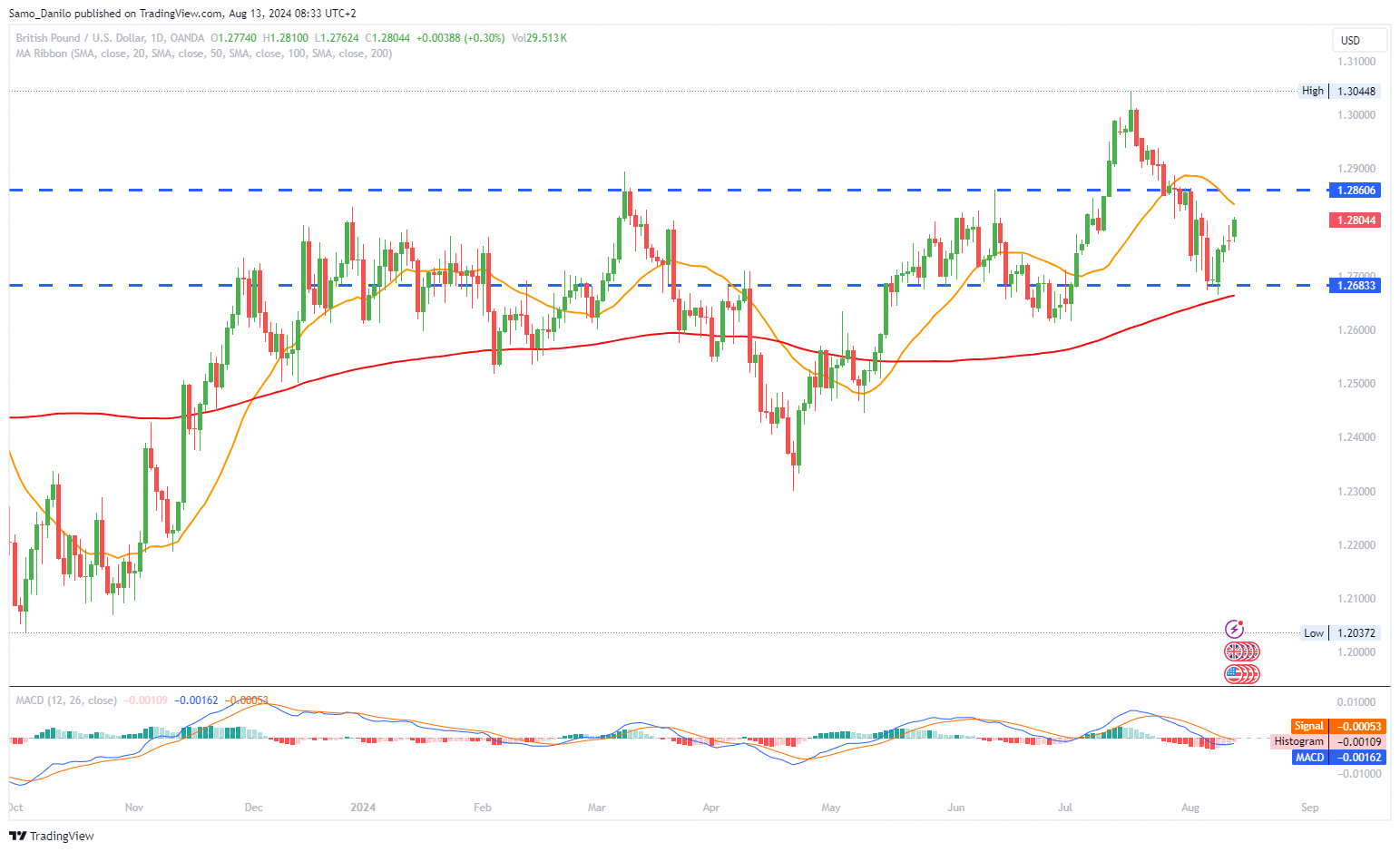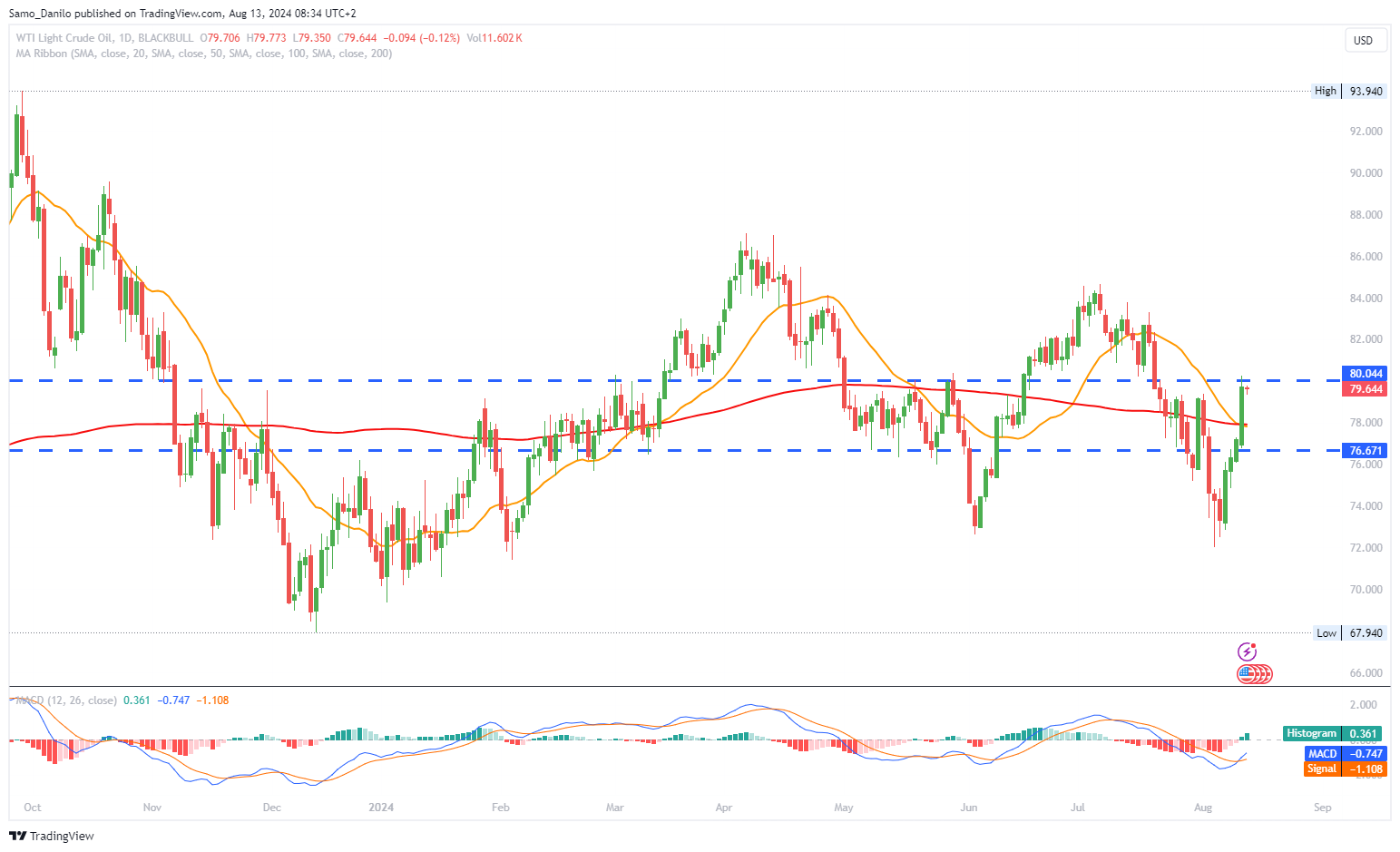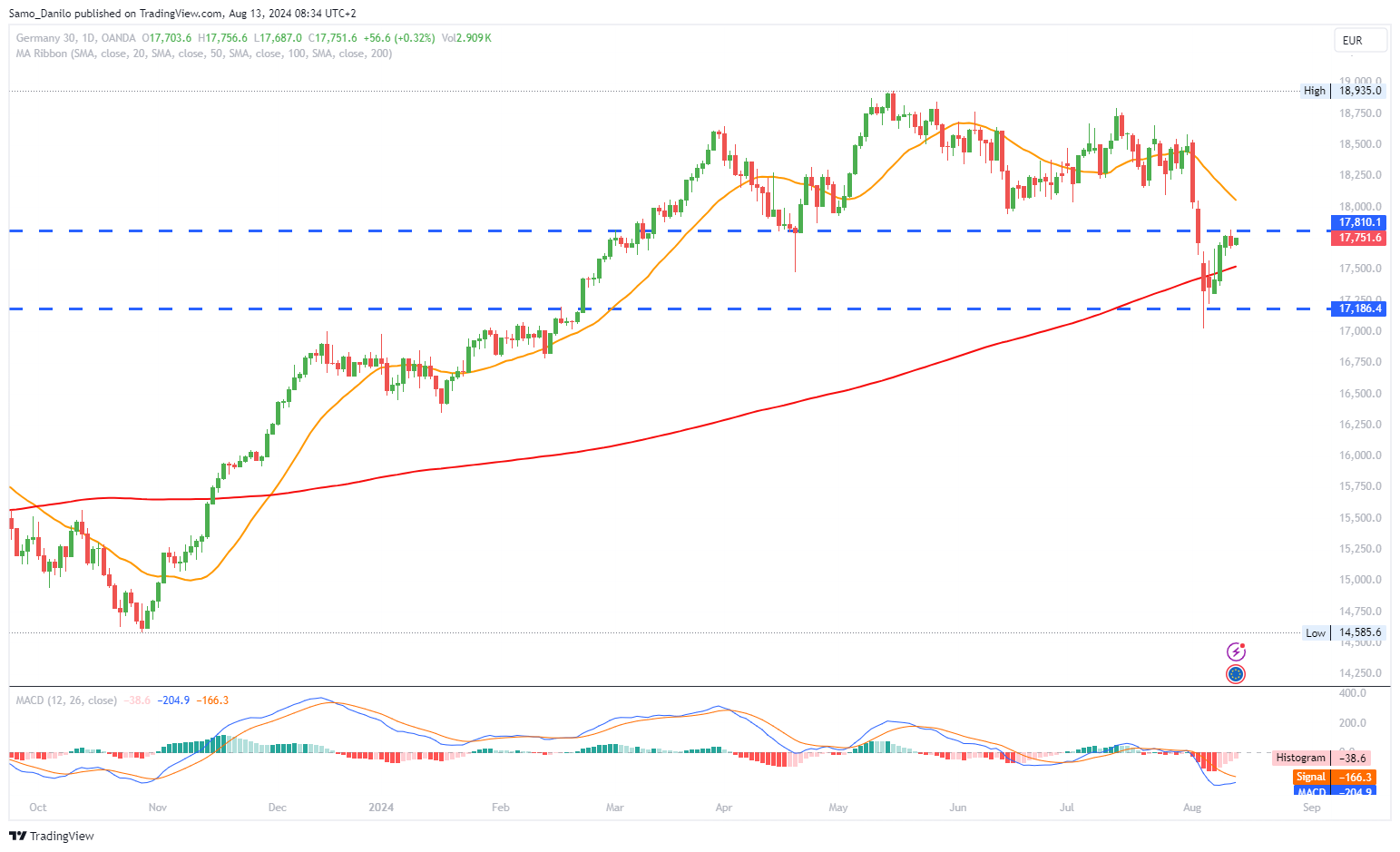EURUSD
- Current Trading Status: The EUR/USD is trading in positive territory around 1.0940 during the European session on Tuesday, showing a slight rebound amid a cautious market tone.
- Eurozone Economic Sentiment: Economic sentiment in both Germany and the broader Eurozone is expected to decline further this month. This downturn reflects a loss of momentum in German economic activity and key sectors across the euro bloc, suggesting continued economic challenges for the region.
- Monetary Policy Outlook: While the European Central Bank (ECB) remains quiet for now, attention is turning to the Federal Reserve. With the September policy meeting approaching, Fed officials are anticipated to share their views soon, potentially influencing market expectations for interest rate cuts.
- Upcoming US Data: Critical US data, including the Consumer Price Index (CPI) on Wednesday and Retail Sales on Thursday, are expected to provide clearer insights into the Fed's intentions regarding rate cuts in September. These releases will be key in determining the Fed's approach to monetary policy adjustments.
- Long-Term Projections: Over the long run, the US economy is anticipated to outperform its European counterpart. Consequently, any temporary weakness in the US Dollar (USD) is likely to be short-lived, reinforcing the USD's relative strength against the Euro.
Closing statement: The EUR/USD pair is experiencing a modest recovery, but the outlook remains cautious as economic sentiment in the Eurozone deteriorates. With significant US economic data on the horizon, traders will closely monitor the Fed's signals on potential rate cuts, which could drive future movements in the pair. The expectation that the US economy will outperform the Eurozone in the long term suggests that any dip in the USD may be fleeting.
GBPUSD
- Current Trading Status: The GBP/USD pair remained steady on Monday, trading flat and testing key technical levels as markets prepare for upcoming inflation data releases midweek.
- Recent Activity: During the European session on Tuesday, the GBP/USD attracted some dip-buying, climbing to a fresh daily peak around the 1.2800 region, reflecting cautious optimism among traders.
- UK Employment Data: The United Kingdom’s ILO Unemployment Rate dropped to 4.2% in the three months leading up to June, down from 4.4% in the previous period, according to data from the Office for National Statistics (ONS). However, the Claimant Count Change for Britain showed an increase, arriving at 135K in July, indicating potential challenges in the labor market.
- Upcoming Economic Data: Later today, the US Producer Price Index (PPI) is scheduled for release, followed by crucial consumer inflation figures from both the UK and the US on Wednesday. These data points will be critical in shaping market expectations and determining the direction of the GBP/USD pair.
- Monetary Policy Expectation: Market expectations that the Bank of England (BoE) will implement two more rate cuts this year, following the first rate cut since 2020 on August 1, may continue to exert downward pressure on the GBP, potentially limiting further gains.
| SMA (20) | Slightly Falling |
| |
| RSI (14) | Slightly Rising |
| |
| MACD (12, 26, 9) | Falling |
|
|
Closing statement: The GBP/USD pair is seeing cautious upward movement, driven by dip-buying amid key technical levels. However, the outlook remains uncertain, with upcoming inflation data and the BoE's anticipated rate cuts potentially influencing future direction. Investors should closely monitor these economic indicators as they may provide critical insights into the pair's trajectory.
GOLD
- Current Trading Status: Gold price (XAU/USD) is retreating from near a one-week high of $2,473 set on Monday, as traders secure profits ahead of crucial US inflation reports.
- Recent Activity: The retreat comes as markets anticipate high-impact inflation data from the US, which could influence expectations for future interest-rate hikes by the US Federal Reserve (Fed).
- US Inflation Expectations: The US headline annual PPI is expected to rise by 2.3% in July, down from the 2.6% growth reported in June. Meanwhile, the core PPI inflation is projected to decline from 3.0% YoY in June to 2.7% in July. These figures will be pivotal in shaping market sentiment towards the Fed's monetary policy.
- Geopolitical Influence: Gold, traditionally seen as a safe-haven asset, saw a jump of over 1% amid heightened risk aversion due to escalating tensions in the Middle East. This surge followed comments from White House spokesman John Kirby, who warned of a potential ‘significant’ attack by Iran on Israel this week.
- Outlook: Going forward, geopolitical developments are expected to continue driving market sentiment and impacting gold prices. Additionally, upcoming US inflation data and speeches from Fed policymakers will be closely monitored for further clues on the Fed's rate path.
| SMA (20) | Slightly Rising |
|
| RSI (14) | Slightly Rising |
|
| MACD (12, 26, 9) | Slightly Rising |
|
Closing statement: Gold prices are experiencing some profit-taking as traders await crucial US inflation data. While geopolitical risks provide some support, the upcoming economic reports and Fed commentary will be key in determining the next direction for XAU/USD. Investors should stay alert to these events as they may have significant implications for gold's near-term trajectory.
CRUDE OIL
- Current Trading Status: West Texas Intermediate (WTI) US crude oil prices dipped slightly during the European session on Tuesday, seemingly snapping a four-day winning streak that had pushed prices to a three-week high.
- Geopolitical Influence: Despite this slight downtick, any significant decline in oil prices remains unlikely due to escalating tensions in the Middle East. Israeli forces continued operations near Khan Younis in southern Gaza on Monday, with anticipation of retaliatory actions from Iran, which keeps oil markets on edge.
- Technical Factors: The pullback in prices could also be attributed to technical selling following Monday’s failure to breach the 50-day Simple Moving Average (SMA) resistance, signaling a potential pause in the recent upward momentum.
- Economic Outlook: Market participants remain confident that the Federal Reserve (Fed) will initiate a rate-cutting cycle in September. Such a move is anticipated to stimulate economic activity, which in turn could increase fuel demand, providing a potential floor for crude prices.
- OPEC's Influence: Adding another layer of complexity, the Organization of the Petroleum Exporting Countries (OPEC) has revised its demand outlook downwards. The upcoming OPEC production quota meeting might see discussions on limiting production to balance supply with the adjusted demand forecast.
| SMA (20) | Falling |
|
|
| RSI (14) | Rising |
|
|
| MACD (12, 26, 9) | Slightly Rising |
|
Closing statement: WTI crude oil prices are experiencing a slight pullback after reaching a three-week high, primarily driven by technical factors. However, geopolitical risks and expectations of a Federal Reserve rate cut are likely to keep downside risks in check. The upcoming OPEC meeting and ongoing Middle East tensions will be critical in determining the next move for crude oil prices. Investors should closely monitor these developments for potential price drivers.
DAX
- Market Movers: Hannover Re surged by 5.23% on the back of better-than-expected earnings, boosting demand for other insurance giants such as Munich Re Group (+1.01%). Additionally, Rheinmetall AG continued its positive momentum from Friday, advancing by 1.41% as investors remained upbeat following its earnings results.
- Economic Indicators: German wholesale prices declined by 0.1% year-on-year in July, following a 0.6% drop in June. This slight improvement in wholesale prices could suggest a recovery in demand, potentially leading to a rise in headline inflation in the coming months.
- German Economic Outlook: On Monday, Bloomberg's Western Europe Economic Team Leader, Zoe Schneeweiss, highlighted a report predicting that the German economy will grow by just 0.1% in 2024. This gloomy forecast underscores the challenges faced by Europe's largest economy, amid sluggish growth and persistent inflationary pressures.
- Upcoming Data Releases: On Tuesday, the ZEW Economic Sentiment Index for Germany will be a key focus. Economists anticipate a sharp decline in sentiment, with forecasts predicting a drop from 41.8 in July to 30.6 in August, reflecting growing concerns about the economic outlook.
- Global Influence: In addition to local data, US producer prices set to be released on Tuesday could also impact global markets, including the DAX. The expected 0.1% increase in July, down from 0.2% in June, could influence the Federal Reserve's rate decisions and, by extension, global market risk sentiment.
| SMA (20) | Slightly Falling |
| |
| RSI (14) | Slightly Rising |
| |
| MACD (12, 26, 9) | Falling |
|
|
The DAX index remains supported by strong corporate earnings, particularly in the insurance and defence sectors, though the broader economic outlook appears less optimistic. The upcoming ZEW Economic Sentiment Index and US producer price data will be critical in determining near-term market direction. Investors should remain cautious as economic sentiment and inflationary pressures may weigh on the DAX’s future performance.




